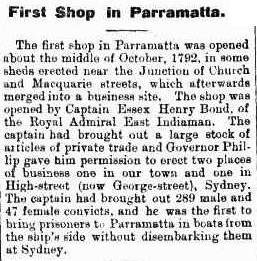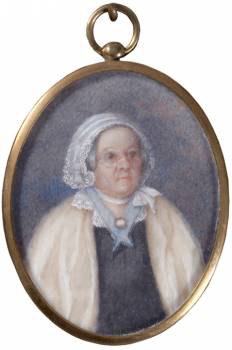Convict Ship Royal Admiral
1792
Embarked: 299 men; 49 women
Voyage: 130 days
Deaths 12
Surgeon's Journal: no
Previous vessel: Pitt arrived in NSW 14 February 1792
Next vessel: Kitty arrived 18 November 1792
Master Essex Henry Bond.
Surgeon Richard Alley
Follow the Female Convict Ship Trail
Prisoners and passengers of the Royal Admiral identified in the Hunter Valley
The Convicts
The convicts on this ship came from counties in England, Scotland and Wales including London, Northampton, Buckingham, Derby, Norfolk, Surrey, Lincoln, Lancaster, Leicester, Worcester, Kent, Stafford, Dorset, York, Essex, Stafford, Nottingham, Suffolk, Cumberland, Salop, Gloucester, Somerset, Chester, Cambridge, Westminster, Carmarthen, Flint, Glamorgan, Brecon, Rutland and Inverness. Having been transferred from county gaols they may have been held on a hulk in the Thames....In 1776 a new act of parliament was introduced to Authorise for a limited time, the punishment by hard labour of offenders - raising Sand, Soil and Gravel from the River Thames. Soon after, the first floating prison, the hulk Justitia, was brought into service. [1]
If they were tried at the Old Bailey they may have been held in Newgate prison.
Prisoners Embarked
The London Times reported thaton the morning of Friday 27th May 1792 one hundred and two convicts were sent off from Newgate, put on a lighter and sent down the river in preparation for being transported to New South Wales [2]
In March 1791 George Barrington had made that same humiliating journey when he was embarked on the Active. He recorded his emotions in a later narrative ......
About a quarter before five a general muster took place ; and, having bid farewell to my fellow prisoners, we were escorted from the prison to Blackfriars-bridge by the city guard, where two lighters were waiting to receive us. This procession, though early, and but few spectators, made a deep impression on my mind ; and the ignominy of being thus mingled with felons of all descriptions, many scarce a degree above the brute creation, intoxicated with liquor, and shocking the ears of those they passed with blasphemy, oaths and songs, the most offensive to modesty, inflicted a punishment more severe than the sentence of my country, and fully avenged that society had so much wronged. [3]
Departure
The Royal Admiral departed England on 30 May 1792Port Jackson
They arrived in Port Jackson on 7th October 1792. [4]
Ten men and two women died on the passage out; four children were born and one male convict escaped at the Cape of Good Hope. Seventy-two men, eleven women and five children were landed sick.
According to an article in the Cumberland Argus it was the first occasion that prisoners were taken directly from the convict ship to Parramatta without being disembarked at Sydney........
Surgeon Richard Alley
David Collins noted the former employment of surgeon Richard Alley........There arrived in the Royal Admiral as a superintendent charged with the care of the convicts, Mr. Richard Alley, who formerly belonged to the Lady Juliana transport, in quality of surgeon, in the memorable voyage of that ship to this colony; a voyage that could never be thought on by an inhabitant of it without exciting a most painful sensation. This gentleman went to England in the snow with Captain Hunter, whither the comforts of long voyages seemed to accompany him. Immediately on his arrival there, he was appointed by the commissioners of the navy to come out in the Royal Admiral as surgeon and superintendent of the convicts embarked in that ship, with an allowance of twelve shillings and sixpence per diem until his arrival in England, exclusive of his half pay as surgeon of the navy [5].
Free Passengers
Thomas Allen, master miller, William Peat, master carpenter and John Jameson all arrived as free settlers on the Royal Admiral.....Historical Records of New South Wales -
Governor Phillip to Under Secretary King,
Sydney 11th October 1792,
Sir,
I have received your letter, dated the 15th May by the Royal Admiral inclosing the copy of an agreement made with the master carpenter and master miller. The settler Jameson with his family arrived in this ship. The Royal Admiral arrived here the 7th instant. When that ship left the Cape of Good Hope, which was on the 30th August last the Kitty had not then arrived there.[6]
John Jameson was appointed Superintendent of convicts at Norfolk Island replacing Andrew Hume who had been superintendent on the Guardian in 1790. [7]
George Thompson also came free on the Royal Admiral. An extract from his journal concerning working conditions of the convicts at Toongabbie was published in the British Critic and gives an indication of how the female convicts may have been employed at this time when the colony was just four years old and accommodation and employment at the Female Factory was still years away.....
The following extract from the journal of G. Thompson, who sailed in 1792, and whose veracity Mr. Dyer does not question, will enable us to form some opinion of the situation of the convicts. About four miles from this place (Parramatta) is another settlement, Toongabby, where the greatest number of convicts are, and work very hard (there is also a good crop of corn standing, and promises well) : their hours are work are from five in the morning till eleven, they then leave off till two in the afternoon, and work from that time till sun set. They are allowed no breakfast hour, because they have seldom any thing to eat.
At night they are placed in a hut, perhaps 14, 16, or 18 together (with one woman, whose duty is to keep it clean, and provide victuals for the men while at work), without the comforts of either bed or blankets, unless they take them from the ship they came out in, or are rich enough to purchase them when they come on shore.[8]
Henry Oliver also arrived free on the Royal Admiral (Colonial Secretary's Index)
Some of the Convicts of the Royal Admiral

1). Mary Reibey.....
2). Convict Artist Thomas Watling who had originally sailed in the Pitt escaped at Cape Town and was captured by the Dutch, imprisoned and taken on board the Royal Admiral in 1792. During his first months in the colony Watling continued a series of letters which he had begun at Cape Town; as Letters from an Exile at Botany Bay to his Aunt in Dumfries - they were published in Penrith, Scotland, probably in 1794.
In a letter dated 13 December 1791, just two months after arrival, Thomas Watling described Sydney Cove.....
Sydney-Cove, from whence I write this letter, is the principal settlement, and is about 1/3 part as large as Dumfries. Parramatta, or Rose-Hill, that I have spoke of, is somewhat less; and the latest settlement, called Toongabbe, about four miles farther inland, is the least of all. Many houses of the two former settlements, are built with brick, and covered with tiles; but none of them, the governor's excepted, exceed the height of one story. His Excellency's, indeed, is composed of the common and attic orders, with a pediment in front, and commands the most exalted station, but as neither the wood, brick, nor stone (lime there is none) are good for much, it is simple and without any other embellishment whatever. It is impossible for a well-wisher to this country, not to breath a sigh, should he visit us, nay, the genuine British patriot could scarce refrain from dropping a tear upon a survey of such mistaken policy. To see what has been done in the space of five or six years, of clearing, building, and planting, is astonishing. To behold hundreds of hands laboriously misemployed, that might be of service, and not burthensome to their country, assuredly deserves attention and reformation; for whatsoever interested men may advance to the contrary, I humbly declare, that it is my opinion, that all that has been done is of little service to our support, and of none at all to government; and that neither this, nor the ensuing century will see us able to subsist ourselves, much less to retaliate what has been lavished upon so very wild an adventure.
Thomas Watling was assigned to surgeon-general John White who was an enthusiastic botanist. Watling produced this miniature of John White.....
It may have been under White's orders that Watling undertook a series of watercolour sketches of Australian bird life. They became known as the Watling drawings and are in possession of the British Museum.
3). James Kelly later of Maitland
4). Robert Whitmore later of Patterson Plains
5). George Bruce, sailor and adventurer, all arrived as convicts on the Royal Admiral.
6). Mary Springate and the following convicts all arrived on the Royal Admiral. Mary and her infant daughter died in Sydney while still on board the vessel in October 1792.
George Jones died in October 1792
John Wallis died November 1792,
Nicholas Viles /Vales died in December 1792.
Samuel Flatt died in January 1793
Joseph Savage died in June 1793
Margaret Wilson in October 1794
William Fowkes died in April 1797
Seletta Guest died in September 1810 aged 45
Elizabeth Harding died in April 1793 - They were all interred in the Old Sydney Burial Ground
7). John Chilton, convict - In October 1805 he was found guilty of having returned from Transportation. Select The Proceedings of the Old Bailey to find out more about John Chilton
Departure from the Colony
The Royal Admiral departed Port Jackson bound for China in November 1796Notes and Links
1). National Archives UK - Royal Admiral - Contents: Built by Barnard, launched 1777, 3 decks, 4in bottom, 919 tons. Principal Managing Owners: 1-4 Sir Richard Hotham, 5-6 Thomas Larkins, 7-8 John Pascall Larkins. Essex Henry Bond took over as Master of the Royal Admiral on the 5th voyage in 1789..... (5) 1789/90 China. Capt Essex Henry Bond. Downs 17 Apr 1790 - 26 Aug Whampoa - 31 Jan 1791 Second Bar - 9 Apr Cape - 28 Apr St Helena - 26 Jun Downs. (6) 1791/2 New South Wales and China. Capt Essex Henry Bond. Torbay 30 May 1792 - 9 Aug Cape - 7 Oct Port Jackson - 14 Jan 1793 Whampoa - 18 Mar Bocca Tigris - 16 Jun St Helena - 21 Aug Downs. (7) 1793/4 Bengal and Madras.2). Women and children of the Royal Admiral 1792 - Cathy Dunn
3). Portrait of the children of George Bond of Ditchleys, father of Essex Henry Bond.
4). Convict Ships arriving in 1792 - Pitt, Royal Admiral and Kitty
5). Settlers and Return of Land Cultivation 1792
6). Hereford- On Monday last, six convicts, under sentence of transportation in our gaol, were sent from thence for Portsmouth, preparatory to their voyage for Botany Bay - Amongst these, are Simon, John and Thomas Watkins, convicted of sheep stealing at our late assizes, all of whom are banished for life.[9]
References
[1]. Prison hulks - National Archives[2]. London Times 28 May 1792 , Vol. 1, part 2, p. 665
[3]. Barrington, George, A Voyage to Botany Bay. A Project Gutenberg of Australia eBook
[4]. Bateson, Charles Library of Australian History (1983). The convict ships, 1787-1868 (Australian ed). Library of Australian History, Sydney : p.139
[5]. Collins, David., An Account of the English Colony in New South Wales, Vol. 1,
[6]. Historical Records of NSW, Vol. 1, part 2, p. 665
[7]. Vivienne Parsons, 'Jamieson, John (1766 - 1850)', Australian Dictionary of Biography, National Centre of Biography, Australian National University, published first in hardcopy 1967
[8]. The British Critic, Volumes 3-4, p.440 of the English Colony in New South Wales, Vol. 1,
[9]. Hereford Journal (Hereford, England), Wednesday, June 05, 1799; pg. 3; Issue 1505. British Library Newspapers, Part III: 1741-1950
↑
